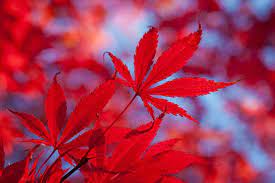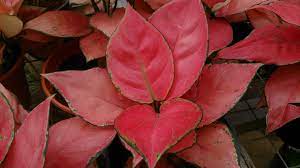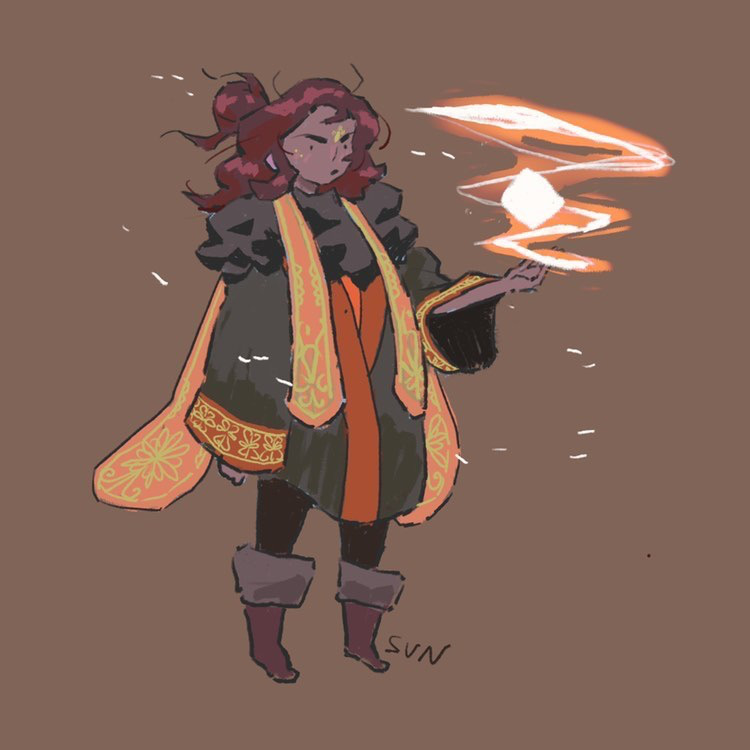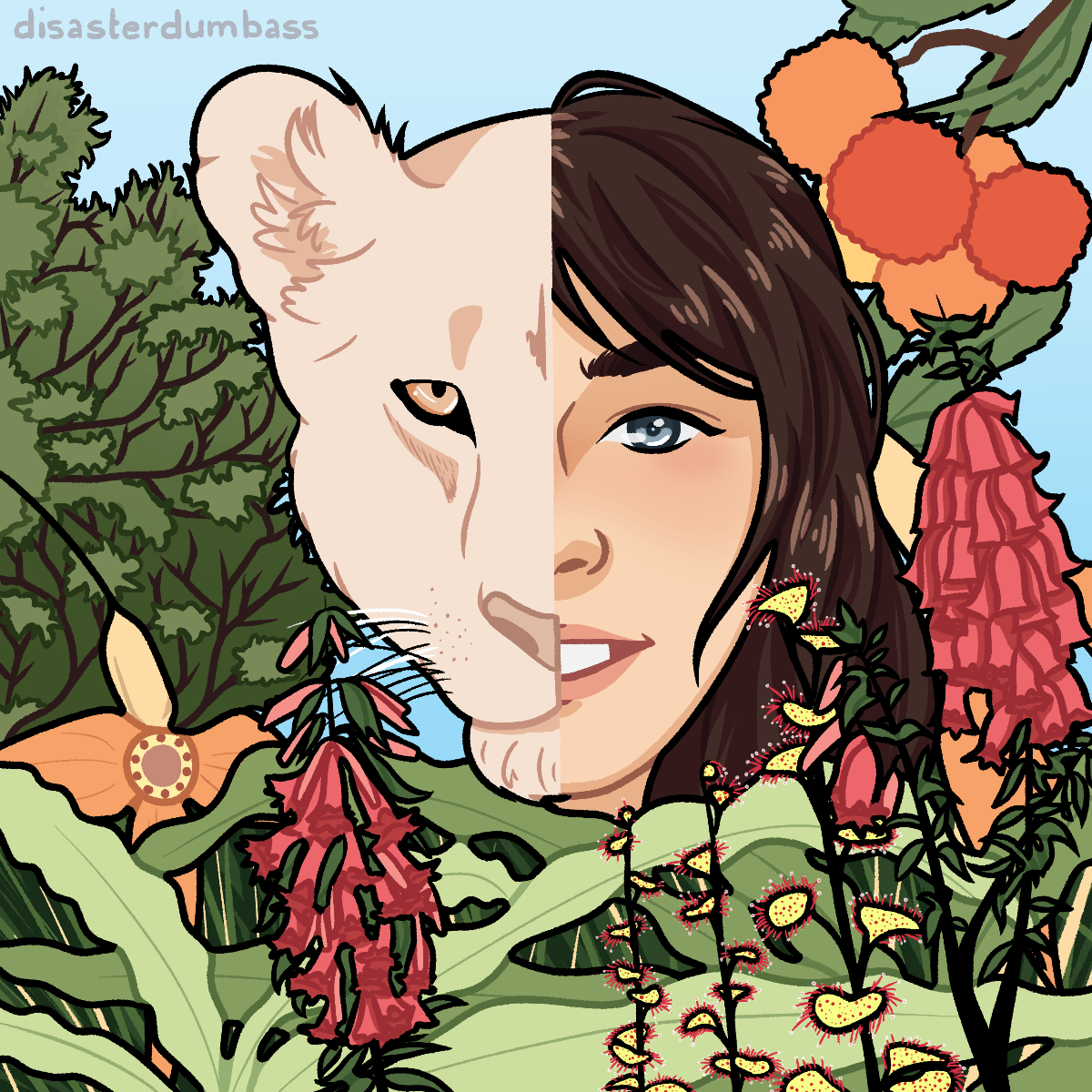Ethynroot
Ethynroot is a marvelous plant. It gains very little credit outside of our communities, for those who can spellwrite are easily able to do without it. But for us, it is vital. And because it is vital, it is sacred.Ethynroot is a small, bush-like plant, that grows in abundance across the continent of Mythia. Treated by many as a weed, especially those in urban areas, ethynroot is near-revered by the Thespians people for its incredible versatility as both a curative substance and a deadly poison, depending on its preparation.
Appearance
Ethynroot typically grows to about half a metre high, and can spread near-indefinitely if not constrained by a lack of available ground or other means, such as active control by humans. It is characterised by its distinctive clumps, almost looking as though it is made of multiple smaller bushes, and its red-brown leaves. As indicated by the name, however, the roots of the plant are its most useful part. These roots are easily observed to be just below the ground, and often form small ridges of dirt showing their paths. When exposed, they are thin and spindly, and quite pale in colour.I've never truly understood the fascination the Thespians have with such a weed. Perhaps, like much of the rest of their culture, it is a fascination with primitive methods, in order to overcome their inability with spellwriting.
Properties
Ethynroot can be used in multiple ways. In its raw form, all parts of the plant are mildly poisonous - consuming the unprocessed leaves or roots will cause minor food poisoning symptoms and prolonged contact with the skin will leave a pink tinge, that will develop into a mild rash over the next three to four days. This form is of limited use, being unsuitable even for most poisons, but it is believed to have been used before by those who wish only to remove targets from a situation from a small amount of time. The most common way that ethynroot is used is as a curative substance, particularly among communities that have little access to ailmentwrits such as small rural villages or Thespian troupes. Both the leaves and roots can be used in this way, but the preparation methods differ slightly.Leaf Preparation for Medicine
The leaves are collected using a sickle and care is taken not to touch them with bare skin so as to avoid a rash. Once collected, they are crushed using a mortar and pestle before being heated over a fire for between two and three minutes. During this time, an acrid vapour rises from the leaves and they wilt, changing from dull red to greyish-black. After cooling, the leaves are mixed with water (and occasionally honey, to sweeten the taste), and dissolve, producing a gritty solution. This solution can be imbibed, and is useful for a variety of treatments including those of respiratory illnesses and some forms of dysentry.Root Preparation for Medicine
The roots are typically used differently, although if prepared in the same manner as the leaves can provide the same curative properties, albeit less strongly. More often, however, they are ground up into a fine powder and combined with honey and various forms of crushed amber or raw tree sap, in order to form the liquid base for a poultice. When applied to open wounds, the mixture can prevent infection - some theorise that the poison damages the demons that bring infections, while others believe that the smell scares them away. There are also those who hold that the mix increases the speed of healing, but there is no clear consensus on this property.First, do no harm. Second, if the Sovereign tells you to, ignore that first rule.
Preparation for Poisons
The exact method of preparation of ethynroot into a strong poison is not officially recorded anywhere. It is assumed that Thespians pass the knowledge between trusted individuals across generations. However, it is commonly known that the first step is combining both the leaves and the roots together and heating, due to the risk of doing so when preparing multiple treatments from the plant. The poison's effects are similar in nature to those of the raw plant, but much more severe; ethynroot poison induces severe food poisoning symptoms and a full-body rash, and will kill the afflicted within 3-5 days unless treated adequately. Most stock treatments for poisoning don't work on ethynroot, and a greater ailmentwrit is typically required. Ethynroot poison is known to have been used in several high-profile poisonings over the years, especially in the Plains kingdoms. These events are typically tied to a rise in hostility against Thespians due to their cultural association with the plant, despite the fact that there is never any clear evidence for their involvement.Cultural Significance
You're not to tell anybody else of this place. Understand? The knowledge that is contained in here is given by Ionzsa. To us, and nobody else.In Thespian culture, ethynroot is one of several sacred plants. Oral histories of their people indicate that it was one of the first curative plants discovered and used upon their arrival on the shores of Mythia, and many common tales deal with the discovery of the plant by a prophet, although the name of said prophet varies based on the ancestry and location of the teller. Some even say that the discoverer was Ionzso in earthly form, in one of his few voyages among the Thespian population after they had arrived in Mythia itself. Due to the sacredness of the plant within Thespian culture, its collection and use is done in a very controlled and reverent way. Typically, only those who are elders of a troupe are permitted to collect the plant, and do so in reverent ceremony using a sickle set aside for the express purpose of collecting it. Ethynroot is almost never collected by Thespians for purposes other than medicine, except in the case of making strong poison for dangerous predators. Typically, Thespian campsites are set up within walking distance of a sample of ethynroot. Because they must also camp near a town to ply their trade as entertainers, this conflicts with the fact that the town's inhabitants typically treat the plant as a weed. Thus, Thespian campsites are typically near the edges of the town, so that they can be near an uncontrolled supply of ethynroot. If a Thespian sees someone unnecessarily removing a sample of ethynroot, they will often offer to take the plant off their hands before taking it to be used - most see the waste of the plant as the waste of Ionzso's gift, and therefore sacrilege.
In Literature
Other than the oral histories of the Thespian people, ethynroot is immortalised in a poem, often set to music, describing the love affair between a Plainsman and a Thespian.Take a whileThe name of the Plainsman is lost to memory, but it is thought that the Thespian may have been one of the original settlers, Thein Dance-Weaver, known for their exceptional versatility in the Thespian community as both a performer and a prop-maker. The wider tale deals with the protectiveness that many Thespian communities have around ethynroot, going so far as to exclude outsiders from the areas where they cultivate it - this is often born out of a belief that the outsiders will sabotage the cultivated beds just as they do with many of the wild plants.
To see me smile
I cannot follow
Where ethynroot grows
You take the bush track
While I walk the road
I cannot follow
Where ethynroot grows
You know the sacred place
You know the grove
But I cannot follow
Where ethynroot grows
Medicinal use outside of Thespian Culture
Although most have no need for the plant due to the large variety of ailmentwrits now available, some herbalists still use it, particularly in small rural communities where paper or other writing implements are scarce. Its use is typically limited and some, particularly elitist spellwriters, avoid it, believing it to be an inferior herb to others due to its association with Thespians.Farming
The plant is available in the wild in large quantity, such that farming is typically not needed. Thespians especially do not farm the plant, due to their nomadic ways. However, it is in theory possible to cultivate the plant outside of its typical growing areas - all one would need is a patch of earth and a sample of the plant or some seeds. It is theorised that most of the plant kept for poison use is grown in this way, to avoid dependance on external crops.Related Articles
Remove these ads. Join the Worldbuilders Guild























I really like the history and cultural significance of this plant as well as your poem
Thank you! I had to think quite hard in this one, I'm glad to see it paid off!